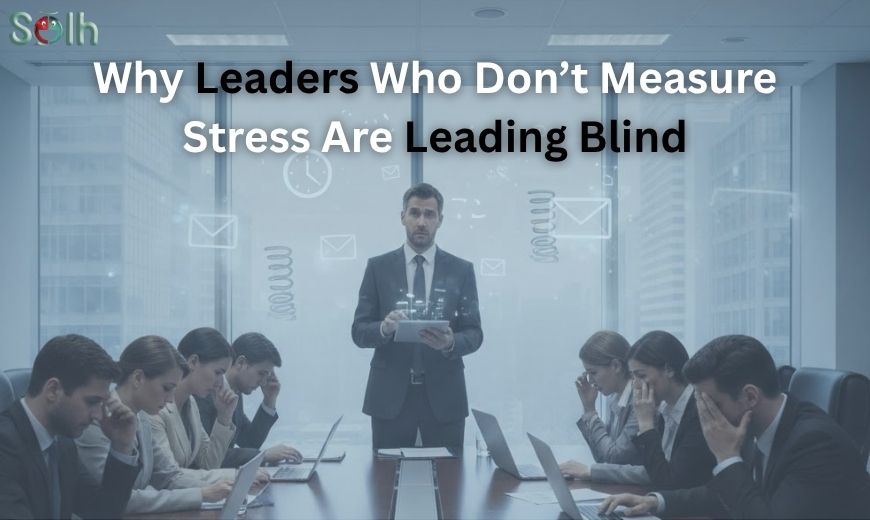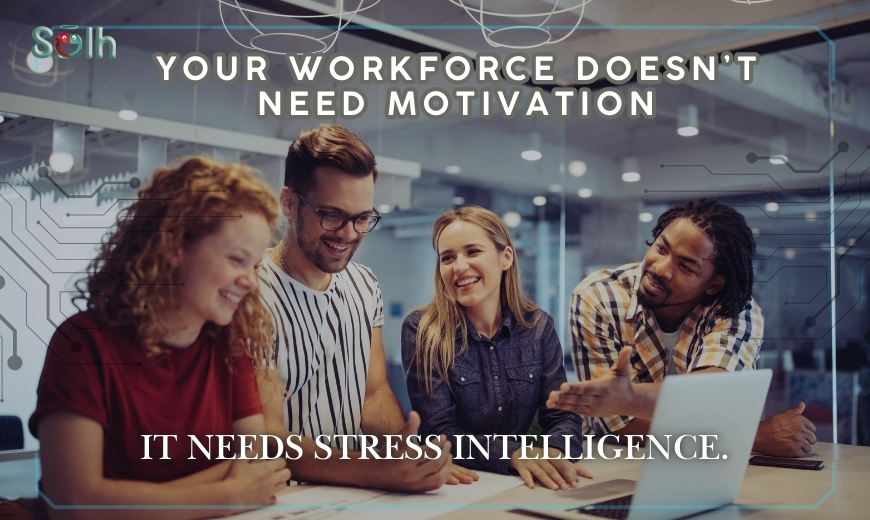Leadership today isn’t about vision boards, KPIs, or the next big digital transformation—it’s about managing human bandwidth. You can automate workflows, deploy AI assistants, or gamify your workplace culture, but if your people are running on empty, your company is running blind.
Let me put it plainly—if you’re not measuring stress, you’re not leading. You’re guessing.
The Unseen Metric That Drives Every Other Metric
Every organization proudly measures productivity, profitability, engagement, and even “happiness” through surveys. But ask a CEO or HR head what their team’s stress index is, and you’ll get blank stares.
Here’s the truth: stress is the invisible KPI that drives all visible outcomes. It’s the single variable that quietly manipulates every dashboard you’re obsessed with—output, absenteeism, attrition, innovation, and even leadership performance itself.
Yet, because stress isn’t as easy to quantify as sales or churn, leaders pretend it doesn’t exist in measurable form. That’s not strategy; that’s denial.
The irony? We measure customer sentiment in real time but still treat employee stress like folklore.
Stress Is the New Virus in the System
Think of your organization as a digital ecosystem. Stress is like malware that seeps in undetected—corrupting performance files, slowing processing speed, and causing system crashes at the worst possible times.
Burnout is not sudden. It’s cumulative. It builds up through small compromises—skipped breaks, emotional exhaustion masked as “hustle,” and leaders glorifying exhaustion as dedication.
And when stress becomes cultural, it doesn’t just burn out employees—it corrodes trust, creativity, and long-term profitability. The biggest threat to organizations today isn’t competition. It’s collective fatigue.
That’s why effective organizational stress management isn’t optional—it’s foundational.
The Leadership Blind Spot
Most leaders operate on the assumption that stress is “personal.” That’s convenient—but false. Stress is organizationally induced far more than we like to admit.
Micromanagement, unclear communication, lack of psychological safety, or leadership hypocrisy are not “individual issues.” They’re environmental triggers.
The problem is, without measurement, leaders can’t see the triggers. They only see the fallout—lower performance, high turnover, disengaged teams—and respond with surface solutions like motivation sessions or free coffee.
That’s like fixing a leaking pipe by repainting the wall.
Why Measuring Stress Matters
Measurement brings visibility, and visibility brings accountability.
When leaders measure stress—accurately and anonymously—they open a window into the emotional climate of their organization. Suddenly, the conversation shifts from “Who’s underperforming?” to “What’s burning them out?”
That’s a fundamental leadership shift—from blame to insight.
You can’t manage what you can’t measure. And you can’t build resilience in the dark.
At Solh Wellness, that’s exactly why we created Streffie, an AI-powered stress measurement kiosk. Because stress isn’t an emotion—it’s data. Facial biomarkers, behavioral cues, and physiological changes can now quantify what we once called “vibes.”
Once you have that data, real change begins.
The Data Doesn’t Lie
Organizations that measure stress start noticing patterns. Teams with higher stress scores are often those under poor leadership, inadequate resources, or conflicting goals.
When leaders get this data, they finally have something tangible to act on—before it becomes attrition or burnout.
Think about it: we have dashboards for sales, finance, and operations—but not for human energy. That’s like driving a car without a fuel gauge and hoping for the best.
When leaders measure stress, they’re not invading privacy—they’re empowering prevention. Anonymous, aggregate insights can reveal stress hotspots across departments or time periods. And when that insight is paired with guided interventions—like Solh’s 1000+ resource library, nervous system exercises, guided plans, or AI buddy support—it turns awareness into action.
This is where organizational stress management becomes measurable, structured, and sustainable.
From Managing People to Managing Energy
The leaders of tomorrow won’t be defined by how well they manage people, but by how well they manage human energy systems.
This requires rethinking leadership metrics altogether. Instead of asking, “How engaged is my team?”, ask, “How regulated is my team’s nervous system?”
Instead of obsessing over productivity graphs, look at the energy balance behind them. Stress and burnout distort performance long before any dashboard reflects it.
AI now allows us to see what intuition has always known—stress is the precursor to collapse. And leaders who measure it early, act early, and recover early will be the ones still standing when everyone else burns out.
The Cost of Ignoring Stress
Let’s talk numbers. The World Health Organization estimates that stress-related workplace issues cost the global economy nearly $1 trillion annually.
That’s not “soft loss.” That’s hard, measurable impact—lower output, higher healthcare costs, and talent flight.
And yet, when it comes to budget allocation, most leaders treat stress management as an HR “initiative” rather than a leadership strategy.
That’s like saying cybersecurity is IT’s problem while your servers are being hacked.
Stress isn’t an HR concern—it’s a leadership responsibility. Because leadership sets the emotional tone of every organization.
That’s why organizational stress management must be embedded in business strategy—not treated as an afterthought.
From Awareness to Action: The Solh Way
At Solh Wellness, we’ve seen how organizations transform when they stop guessing stress and start measuring it.
When companies integrate the Streffie Kiosk into their ecosystem, they begin to see stress as data, not drama.
When employees engage with the Solh App, they find over 1000+ guided resources—somatic exercises, nervous system meditations, JPMLR techniques, and binaural beats—to regulate stress daily.
And when they connect with Solh Buddy, our AI-driven support guide, stress management becomes not just accessible but personalized.
We’ve learned that prevention works better than intervention. And visibility works better than assumptions.
When stress is measured, it can be managed. When it’s managed, performance stabilizes. When it’s stabilized, growth sustains.
That’s the real ROI of organizational stress management.
The Final Truth
Leadership without emotional data is outdated leadership.
If you’re not measuring stress, you’re leading in the dark—chasing symptoms, misreading signals, and losing people before you even know they’re fading.
The future of leadership belongs to those who are emotionally intelligent and data intelligent. Those who understand that empathy needs analytics, and compassion needs structure.
Because in the end, leadership is not about managing work.
It’s about managing what works inside people.
So, if you’re a leader reading this, here’s your wake-up call:
Start measuring stress before stress starts measuring your leadership.



